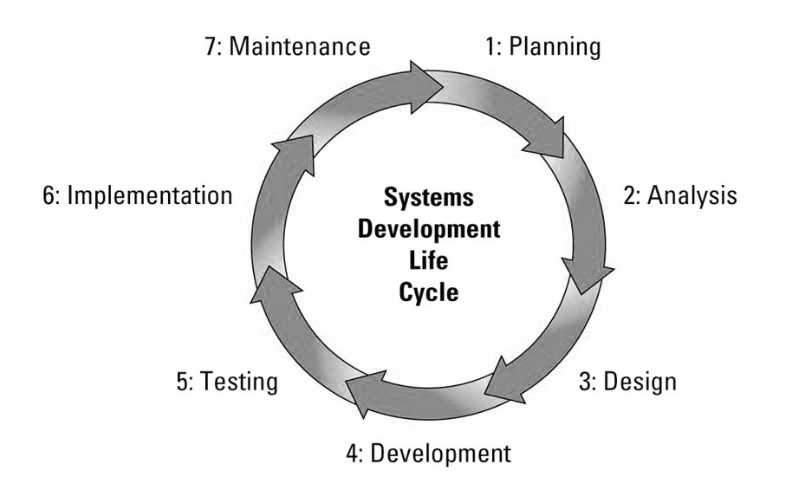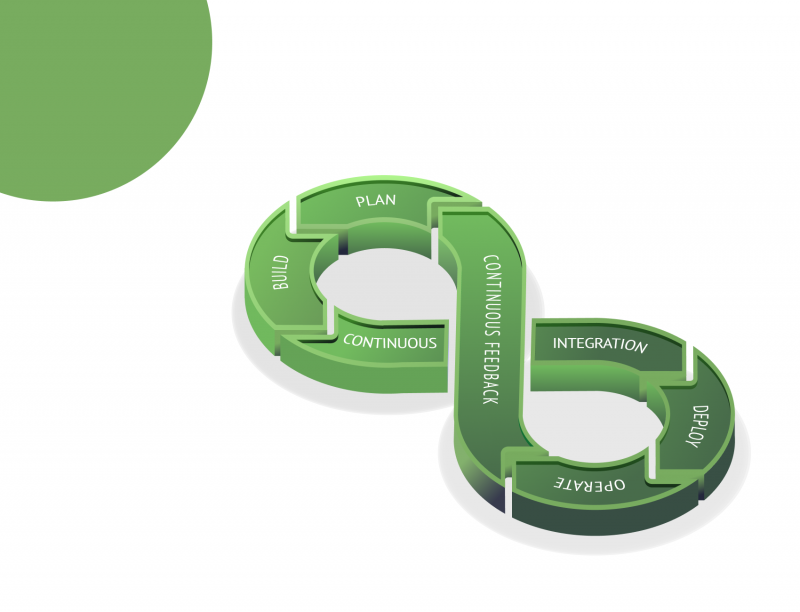Developing software, you need to follow a defined approach and a series of steps in order to meet your customers’ requirements and expectations. SDLC is the abbreviation that structures all the stages required to get a successful product release.
What exactly is the Software Development Life Cycle? What phases does SDLC involve?
Spend 7 minutes to figure it out.
![]()
Contents
What is SDLC?
Software Development Life Cycle (SDLC) is a framework defining processes that are aimed to produce software with the lowest cost, highest quality, and in the shortest time. All over the world, development teams within software companies apply this approach.
Following all the steps of this lifecycle, you’ll get a detailed plan on how to develop, change, maintain, and replace a software system.
What is the history of the SDLC?
Software developers started their active work when the first computers appeared. Since that period, fundamental methods and practices have evolved over the decades and adapted to the state of the art in computer hardware.
Innovative development tools and modern thinking about organizational management have also influenced the software development world. New methods and approaches to software development have grown out of private software development efforts across the globe.
All the methodologies vary, sharing a common goal: to develop software as efficiently and cheaply as possible. So what are the stages of SDLC?
Seven Stages of Software Development Life Cycle
These steps look roughly the same for various methodologies with slight differences. They typically occur in this order, though sometimes they can be mixed and happen in parallel.
Different SDLC methodologies have their own characteristics. To give a few examples:
- Agile methods combine all these phases into a rapidly repeating cycle.
- The traditional Waterfall tends to take each of these stages in turn. So outputs from one step become inputs to the following one.

1. Planning
The very first stage of SDLC is initial planning. The phase includes the aspects of both project management and product management, such as:
- Scheduling
- Capacity planning
- Material and human resource allocation
- Cost estimation
- Provisioning
If planning goes successfully, you will get such outcomes as detailed project plans and schedules, cost estimations, and procurement requirements.
Even at this stage, collaboration is rather critical: project managers, developers, the operational and security teams should work altogether to ensure that all perspectives are represented.
And of course, it’s worth saying that modern planning looks rather strange and inferior without the use of handy roadmaps and timeline systems. The most popular project management software solutions are based on using Gantt charts. They allow teams to consistently visualize all the planning steps, without losing or forgetting anything.
2. Defining requirements
Stakeholders and managers have to collaborate with the IT team to communicate their requirements for new development and enhancement.
At the requirements stage, software developers gather requirements from business stakeholders and experts involved. They work together with the customer to document all business processes that the software should automate.
The deliverables at this stage include:
- a document that lists all requirements, in Waterfall;
- a backlog of tasks to be performed, in Agile.
3. Design and prototyping
After defining requirements, developers and software architects start to design the software. Developers apply established software development patterns to solve algorithmic problems.
Rapid prototyping is sometimes also included in the design process. This technique involves comparing solutions to find the best fit.
At the end of this stage, teams get design documents with the patterns and components selected for the project and the code used as a starting point for further development.
4. Software development
This step is actually about the software under development. In accordance with the defined development methodology, the work can be conducted in:
- time-boxed Sprints (Agile)
- single block of effort (Waterfall)
The main goal for developers, regardless of the picked methodology, is to produce working software as quickly as possible. Stakeholders should be regularly engaged as well to ensure that the software meets their expectations.
The result of their work is testable and functional software.
5. Testing
This stage is one of the most important in the software development life cycle, as there is no way to deliver high-quality software without testing.
The variety of testing procedures necessary to measure quality includes:
- Code quality review
- Unit testing
- Integration testing
- Performance testing
- Security testing
Testers automate these processes to ensure that tests are run regularly and never skipped. After the stage, full-functional software is ready for deployment.
6. Deployment
It’s quite logical to guess that this stage must require maximum attention to detail. However, this phase is highly automated. It can be almost invisible because the software is deployed the moment it is ready.
Sometimes manual approvals are also required, especially in enterprises with lower maturity. The output of this stage is the product release.
7. Operations and maintenance
It might seem that this is already a happy end. However, the operations and maintenance phase is rather important too.
The software development life cycle does not end with the software rollout.
The team should constantly monitor software performance to ensure its proper functioning. Bugs and defects may appear at any time that often feeds developers’ work back into the process. By the way, bug fixing can flow through the entire cycle. The main goal here is to ensure that code enhancements do not lead to new issues.
Takeaways
Any software product starts with an idea or concept and then flows through a series of consistent stages until it is deployed.
The software development life cycle is a continuous process as software needs new features, upgrades, and bug fixing even years after the release date.
Whichever SDLC method you choose, follow these phases, apply appropriate tools, and you’ll definitely create your outstanding software solution that will rock and flourish.





